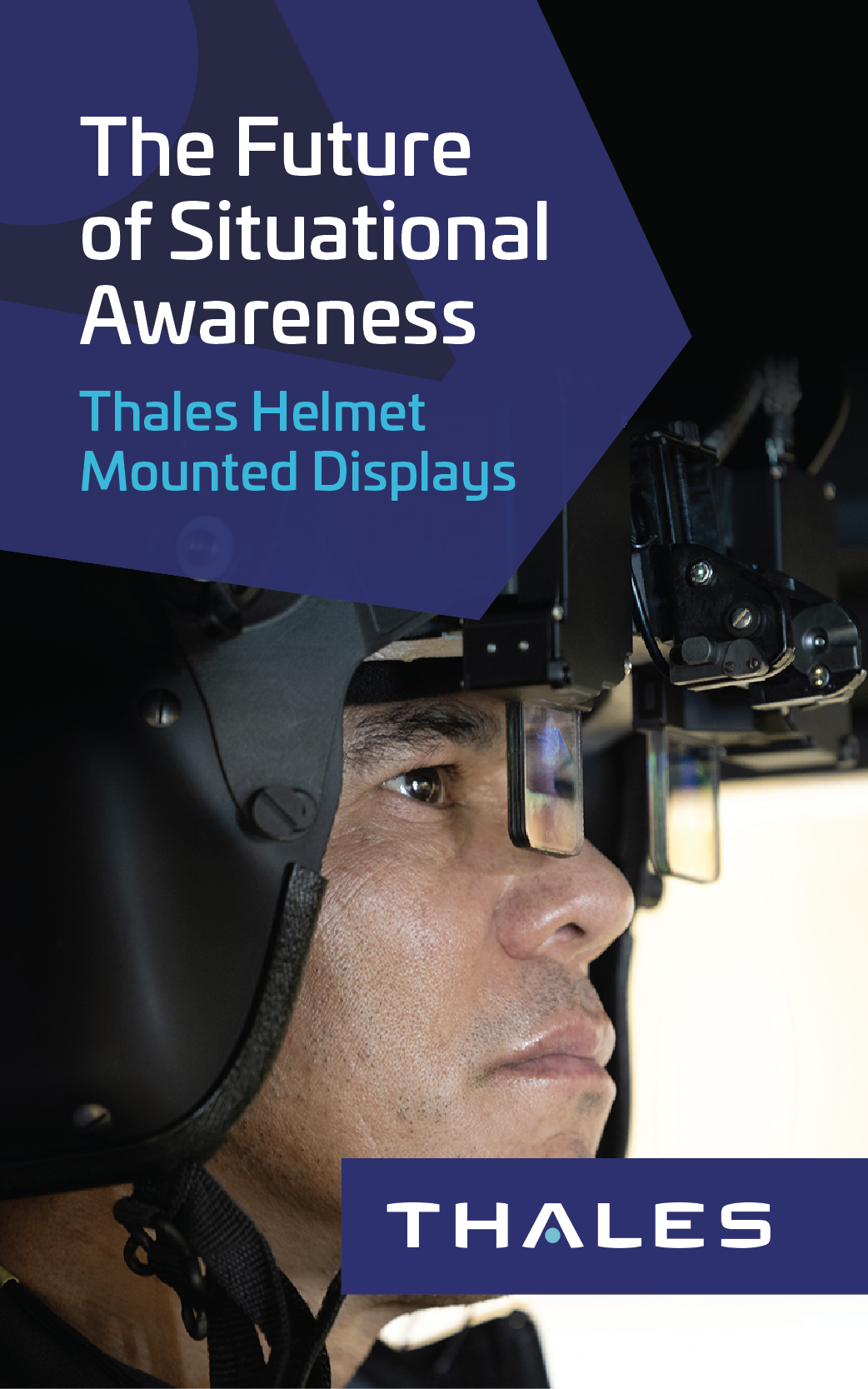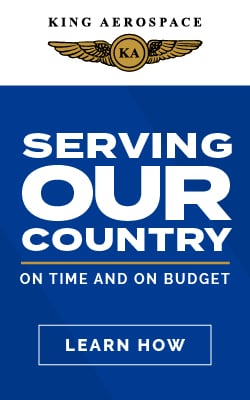Looking Back / Army Aviation, March 2023; By Mark Albertson
Branchhood
Part II: Discourse and Debate
Within a three-and-a-half-year study conducted by the Officer of Personnel Management System in the seventies, Major General George Putnam, Director of Military Personnel Policy, recommended that Army Aviation should be organized as a branch. Such was disapproved by General Bernard Rogers, then Chief of Staff. “Aviation is an ‘entry specialty’ within a combat arms affiliated ‘carrier’ branch, stressing that aviators, . . . ‘must be experts in aviation.’”[1]
Yet, even among the Aviation community, opinions varied with regards to branchhood. For instance, Brigadier General William J. Maddox, Director of Army Aviation OACSFOR, DA, began his criticism with the issue of Centralization versus Decentralization of aerial assets in the wake of World War I. He acknowledged the growing sophistication of aircraft and aviation techniques and skills that would eventually require the divorce of the Air Force from the Army in 1947. However, . . .
. . . he continued with, “Those who supported decentralization of aviation did so as an extension of the normal philosophy of organizing Army units. For example, the tank is a ground striking weapon which, when massed, has the capacity for breakthroughs, exploitation and victory on the battlefield. Similarly, artillery, when massed, can provide a devastating effect on the enemy.
“The question is at what level should tanks or artillery or other ground weapons be massed and how and at what levels can they be appropriately controlled to gain the maximum combat advantage. Rather than concentrate all artillery and tanks at the Army level, we normally decentralize so that battalions of tanks and artillery work for division commanders and massing can occur at battalion, brigade, or division level. We give corps and army commanders the capability to influence the battle and implement priorities of effort by providing non-divisional tank and artillery battalions for their use. They can also mass divisions.”[2] At the same time, Artillery and Armor are branches within the Army masthead. Again however, . . .
. . . “When advocates of decentralization emerged from World War II, only the artillery had its own aircraft. These were Piper Cubs which were assigned permanently to artillery battalions. Immediately after the war those of us from cavalry, infantry, and other branches began flight training so that other ground organizations could have regularly assigned aircraft.
“The Army has followed this philosophy constantly so that we now have aviators in most arms and branches of the Army. The Medical Service Corps mans medical evacuation aircraft; Signal Corps aviators are assigned to signal battalions and groups; Transportation Corps officers, in addition to administering maintenance, also man heavy lift aircraft; rated Ordinance Corps officers administer aerial weapons projects, and so it goes throughout the Army.
“The decentralization philosophy also has been followed in the assignment of proponency for aviation units. General Westmoreland assigned branch proponency for assault helicopter units to the infantry. The Infantry Center is concerned with lift company TO@Es, and the doctrine for their employment. Heavy lift companies come under the proponency of the Transportation Corps. Armor is responsible for air cavalry organizations and for attack helicopter companies which bear a relationship to cavalry and tank units. The Artillery, of course, has cognizance over aerial artillery. Military Intelligence is concerned with Mohawk companies whose mission is to gather intelligence material.
“When you view the organization of the Army in this manner, it becomes clear that the Army will be much stronger in its capability to perform its combat tasks if it continues with the decentralization philosophy. We have been down the centralization path previously and find that it does not meet our requirements. We utilize the centralized resources provided by other services as an ad-on to our own capabilities which we must possess on a full-time basis. Thus the close air support fighter can be an occasional contributor to the battlefield effort of a front line unit but Army resources are available on a full-time basis.”[3]
The issue of Centralization versus Decentralization was not the sole basis of argument for or against branchhood. Others were fielding arguments beyond those brought forth by General Maddox. Colonel Andrew J. Miller, Commander, 12th Aviation Group, wrote, “With the exception of branch intensive schooling, we have the ideal situation for incorporating our Aviation officers into a new Aviation Branch.
“Aviation technology is exploding. The new UH-60 is arriving in field units. The CH-47 modernization program is underway. The YAH-64 will become a reality in the near future. Deficiencies in our Scout helicopters have resulted in the Near Term Scout Helicopter (NTSM) and AHIP.
“These and other major advances in technology will dictate large changes in Aviation operations. Technicians and logisticians will be required to respond with new tactics, incorporating ever increasing Aviation capabilities, to better integrate Aviation into the combined arms team.”[4]
Colonels Miller and Kitterman were seconded by Major Charles B. Cook, who had stated just two months previously, “We’ve been fortunate to acquire some remarkable new aircraft, such as the UH-60 ‘Black Hawk,’ which is presently being fielded, and the pending AH-64 attack helicopter. These new ‘state-of-the-art’ aircraft open up some tremendous opportunities for growth in aviation tactics and doctrine. They’ll significantly alter the shape and outcome of today’s and tomorrow’s mid-to-high-intensity battlefields.”[5]
Major Cook also suggested, in an addendum to his article, that Army Aviation was the medium for an “Open Forum” on branchhood, to which he remarked, “I’ve been appalled at the apathy shown by most aviators regarding a separate Aviation Branch. We need to discuss this in open forum—the vehicle of the magazine is excellent—and we should stimulate some of your Tigers in developing pro and con views in this area.”[6]

The man who started it all, Brigadier General William Wallace Ford, who organized and then led the Air Observation Post, the proverbial seed of Army Aviation. Ford was the first Director of Air Training.
Colonels Miller and Kitterman took Major Cook at his word, for they followed up in support with a literary effort two months later. Yet, six years earlier, a contrary opinion was rendered by Lieutenant Colonel (P) Carl M. Putnam, HQ, ARR-IV, Atlanta, Georgia. Lieutenant Colonel Putnam wrote in response to an article, “Pandora’s Box,” which appeared in the May 1975 issue of Army Aviation:
“Airmobility: The crucial question is not what can the Army do for aviators but rather what can the proposed Aviation branch do for the Army. Since aviation is not an end in itself, the answer is ‘nothing.’
“The doctrine of airmobility upon which aviation is founded,[7] is defined as using aerial vehicles to better accomplish traditional Army missions; missions which are already a responsibility of the various branches. Branch schools currently teach the principles used in accomplishing these missions.
“Therefore, if expensive vehicles are needed to accomplish a type of mission, then the branch primarily responsible for that, already established and its assigned mission, should provide the expertise to operate and control these machines.
“Branch qualification is, or should be, important to that concept. On the other hand, if branch expertise is not required to accomplish the Army’s missions, then the branch school system is out of date.”[8]
The article Lieutenant Colonel Putnam had referenced and upon which his riposte had been based had been published in Army Aviation two months prior. The author, Colonel Samuel P. Kalagan, had focused his argument on personnel, the aviators themselves, as to what effects branchhood would have or, even would not have, on aviation personnel.
Midway through his article, Colonel Kalagan compared, weighed and measured the amount of personnel in aviation as opposed to the other branches of the Army, “. . . there are 9,500 commissioned and 5,000 warrant aviators on active duty. Do you realize that these totals make us the second largest branch in the Army? MI is a separate branch of intelligence specialists and they only total 4,600. The JAG, a pure specialist branch, has only 1,700 officers. Signal is a biggie specialist group with 6,000 officers.[9]
Lieutenant Colonel Carl Putnam took a contrary position most definite. In this he referenced the “Law of Supply and Demand.’ “When the war in Vietnam was over, the number of aircraft in the Army was reduced, of course, and the need for aviators became much less. Thus, many aviators became victims of the RIF. It should be noted that the law of supply and demand applies to every skill, not just aviators.
“For example, Finance, Quartermaster, Signal, and a few other branches were short officers so some aviators avoided the RIF by transferring to these branches. The formation of an Aviation branch, could only make matters worse and perhaps cause a further RIF of aviators.
For example, “Branch requirements based on cockpit seats would be short of 15,000 aviators now on active duty. Under the present system, aviators in excess of requirements are absorbed by their using ‘ground allocations.’ The branches are willing to do this because they recognize talent and the contribution of aviators to increased combat effectiveness on the battlefield.”[10]
Again, the above was in response to an earlier point made by Colonel Kalagan in “Pandora’s Box,” to which:
“Argument: If we place all aviators in a single branch, we lose effectiveness in aviation support because the aviator would lose his coincidence of interest with the other branches and be less effective.
“Answer: Before RVN, the aviator was programmed to serve one year in every five, by regulation, to be considered ‘carrier qualified.’ This year could be met by attendance at an Advanced Course; by a tour with an ROTC unit; by a tour as the S-1, S-2, S-4, or Assistant S-3 (Liaison Officer) with a branch TO&E battalion; as the Commander of any HQs Company; and occasionally, if one were lucky, by commanding a rifle company or a firing battery or a recon troop.
“Some aviators served the minimum of nine months to a year in such assignments; others, got a much as 24 months or more. It was erratic, however, and did not equate to even one year in five.
“If the aviator took charge of his own career and shopped around hard enough, he could get more than the minimum. If one waited for OPD managers to arrange for the ground tour, the one in five principle didn’t work too successfully. Sure, they’d place you in the environment, such as USAREUR, but from arrival on, you were on your own.
“During RVN, ground duty was shut off to aviators unless individuals made their own special personal arrangement to serve in a branch TO&E non-aviator combat unit in-country. DCSPER&OPD covered this gap in the commissioned aviator’s career by ‘advertising’ selection boards to give aviators due consideration for failing to do more than fly.”[11]
Before taking leave of the thoughts of Colonel Kalagan, we must regard his ideas on ‘aviators who got RIF’ed.’
“Did such instructions help? During the 1974 RIF, 22% of all aviators in the OPD branches authorized aviators were RIF’ed, while only 18% of the eligible non-aviator officers got the axe. How will selection boards look at aviators now that the RVN is completed. Maybe the answer lies in how many eligible field grade aviators were selected recently for other than Aviation Troop Commands?
“This magazine used to print such ‘success’ stories—command selection, senior service school selection, etc. The next such publication will be interesting. Isn’t it odd that warrants who don’t attend combat and combat support branch career course nor serve in ‘branch qualification’ tours still provided same aviation support to the combat troops in RVN as their commissioned contemporaries, whether it be with an UH-1, an LOH, a Mohawk, an 0-1, or an RU-21? Aviation WO’s are eligible to fill cockpit seats in an Air Cavalry Troop without the privilege of attending Armor Advance Course. Without advantage of MSC School, they still fly a pretty fair DUSTOFF mission. Right. CW4 Novosel? How effective must effective aviation support be?”[12]

Major General Carl A. McNair, the first Director of Army Aviation as a Branch of the U.S. Army. McNair played a pivotal role in Army Aviation on its way to branchhood, both in peacetime and in war.
But the possibility of Centralization in the guise of Army Aviation as a branch was becoming more and more a reality. Most certainly this was observed by Major General Carl H. McNair, Jr., in his 2007 article in Army Aviation:
“Evolving Warfare, New Requirements: When the Army’s Training and Doctrine Command (TRADOC) was formed and AirLand Battle doctrine evolved in the mid-1970s, reorganization of Army units brought a new perspective for fighting close, deep and rear battles.
“Doctrinal and force structure analyses coupled with major personnel considerations led to a pivotal organizational decision, a precursor and major driver leading to the Aviation Branch.
“An aviation brigade was made organic to each of the Army’s divisions. Heretofore aviation brigades were organic only in the air assault (air mobile) division with three separate aviation groups organic to the corps in Europe and Korea.
“Divisional brigades were a giant step providing multiple aviation battalions both attack and assault, within a colonel-level command comparable to the infantry and armor brigades and division artillery.
“Today’s brigade commanders have never known it otherwise.
“Further, in some doctrinal scenarios, the aviation brigade could be employed as a fourth maneuver brigade headquarters with command and control of ground maneuver units in deep battle scenarios, rear area or flank security—again another first for an aviation unit.
“Division commanders welcomed the flexibility with another command and control element over the expansive area of operation envisioned in AirLand Battle doctrine.”[13]
But life does not advance in a straight line. For, “in January 1979, Brigadier General W.E. Sweet, after another in-depth study, and with support from Putnam, recommended the formation of an aviation branch to General Bernard Rogers, then Army Chief of Staff. Rogers met with all of the Army’s four-star generals and not a single one concurred for an aviation branch.
“In October 1982, during the Army Chief of Staff’s commanders’ conference, GEN Otis briefed the senior officers, not changing a single word in our recommendations.
“There was strong opposition led by generals Frederick J. Kroesen, Commander of U.S. Army, Europe; and Richard E. Cavazos, commanding General of the Army’s Forces Command. The most outspoken opposition came from two retired generals: Hamilton H. Howze, who retired in July 1965, and Robert M. Shoemaker, a former FORSCOM commander; both aviators.”[14]

General Hamilton H. Howze, first Director of Army Aviation. One of his largest contributions was to the acceptance of Army Aviation: He was Army Establishment, which lent to the acceptability of Army Aviation at a time it was needed.
“At Fort Benning, Major General Robert L. Wetzel, the commandant of the Infantry School, opposed the formation of an Aviation branch because he thought it important for some infantry officers to continue to be aviators.
“When asked what an infantry aviator had to do to be considered a fully qualified infantry captain, he said that they should successfully command a rifle company. After some thought, he said there should be adequate opportunities to do that.
“When asked what an infantry lieutenant colonel aviator needed to do to be fully qualified; Wetzel reasoned that there would not be adequate opportunity for their command of an infantry battalion. Wetzel concluded that an Aviation branch was probably the best solution.”[15]
“Not so at the Armor School at Fort Knox, Kentucky. Major General Louis C. Wagner, the commandant, strongly opposed an Aviation branch. One of his key points was that armor aviators frequently commanded reconnaissance squadrons and battalions. He never wavered and fought the formation of an Aviation branch all the way.”[16]
Endnotes
[1] See page 53, “Birth of the Army Aviation Branch, April 12, 1983,” Army Aviation, by Major General Carl H. McNair, Jr., (Ret.), December 31, 2007.
[2] See page 10, “The Question of a Separate Branch,” Army Aviation, by Brigadier General William J. Maddox, Jr., July-August 1971.
[3] See pages 10 and 11, Brigadier General William J. Maddox.
[4] See pages 11, 60 and 61, “Aviation as a Branch,” Army Aviation, by Colonel Andrew J. Miller and Colonel James H. Kitterman, November 30, 1981.
[5] See page 14, “It’s Time for an Aviation Branch,” Army Aviation, by Major Charles B. Cook, August-September 1981.
[6] See page 14, Major Charles B. Cook.
[7] Lieutenant Colonel Putnam’s analysis brings forth a pertinent point: If, as he suggests, Army Aviation was founded on airmobility, then what is considered Army Aviation prior did not exist. What was founded was the Air Observation Post, June 6, 1942. The terminology, “Army Aviation,” does not appear within the narrative of the reputed “birth certificate.” So what is actually considered Army Aviation did not truly become so until the early 1950s.
A like argument exists with regards to many of the uninitiated in this country labeling America a “Democracy.” The Founders of this Nation were not fans of Democracy. You will not find the term “Democracy” in the Constitution, attendant Bill of Rights or even The unanimous Declaration of the thirteen united States of America (Declaration of Independence). This Nation was founded as a Republic, end of discussion.
[8] See page 6, “Close Pandora’s Box,” Army Aviation, by Lieutenant Colonel (P) Carl M. Putnam, July-August 1975.
[9] See page 25, “Pandora’s Box,” Army Aviation, by Colonel Samuel P. Kalagan, May 21, 1975.
[10] See page 4, Lieutenant Colonel Carl M. Putnam.
[11] See page 6, Colonel Samuel P. Kalagan.
[12] See pages 6 and 26, Colonel Samuel P. Kalagan.
[13] See pages 52 and 53, “Birth of the Army Aviation Branch. April 12, 1983,” Army Aviation, by Major General Carl H. McNair, Jr., (Ret.), December 31, 2007.
[14] See page 33, “Dealing With the Aviation Branch Issue: A Tough Sell to the Army,” Army Aviation, by Major General Benjamin I. Harrison, (Ret.), February 29, 2008.
[15] See page 33, Major General Benjamin I. Harrison, (Ret.).
[16] See page 33, Major General Benjamin I. Harrison, (Ret.).
























